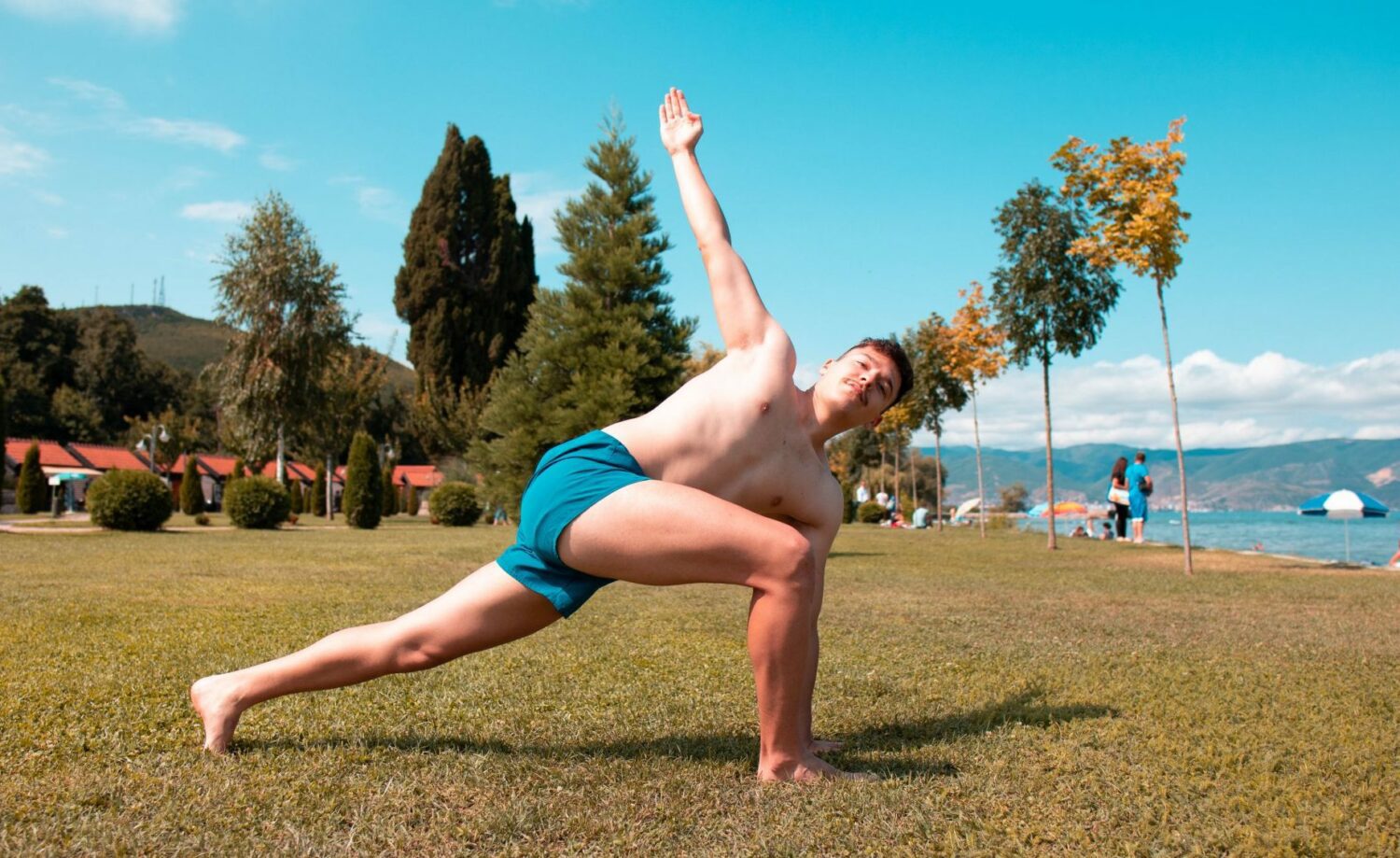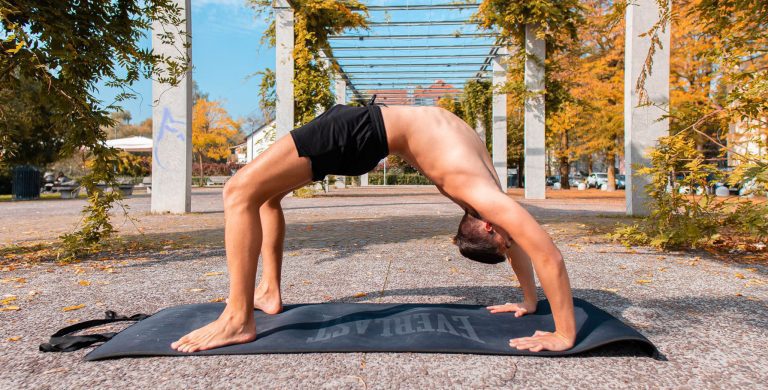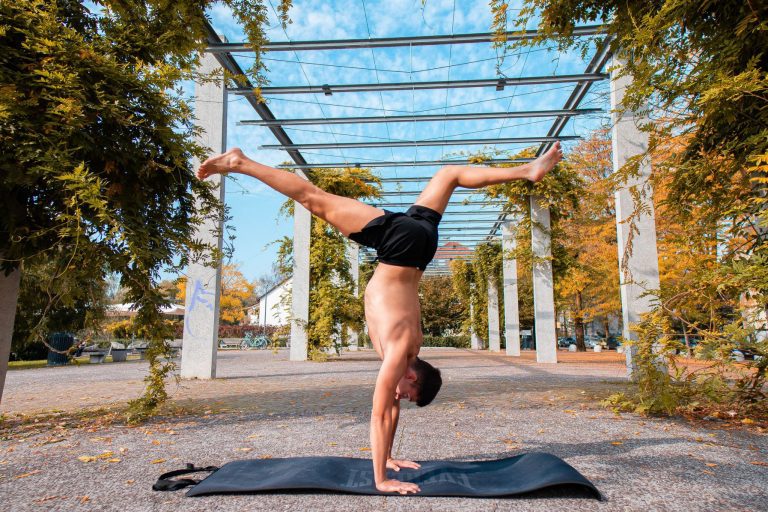Yoga for Mood: Depression, Anxiety and Stress Reduction
Yoga: Mind-Body-Spirit Integration Practice
Yoga as one whole practice that involves poses, breathwork and meditation may significantly improve mood and emotional imbalances. while Yoga for mood is a broad topic, we’ll go through the basic mechanisms of action through which yoga can exert its potential.
Through many different pathways, yoga can alter changes both on a psychological level, the way you think, observe thoughts, and your self-awareness, but it can also improve hormonal balance and influence brain structure.
Yoga is known to calm us down, relax and revitalize our bodies. This is true for mood and behavior also. Some of the major mood issues are anxiety, depression, mood swings, OCD, PTSD and Bipolar disorder.
There are many reasons yoga & meditation may improve these symptoms and some of them act on a physiological level, some on a psychological, and others on an anatomical and even energetic level.
Depression: Types, Cause, Intensity, Neuroscience
Depression is a mood disorder characterized by feelings of sadness. People suffering from depression can experience different symptoms and emotions, like lack of energy, fatigue, anger, existential crisis, over-eating or under-eating, oversleeping, slower metabolism, lack of desire, and so on. Feelings of worthlessness, emptiness, sadness, and irritability are common.
Many types of depression exist and each individual feels it in a different way, more common types are persistent, major, psychotic, and situational depression.
There are many different factors that can cause or influence a depressive state such as death or loss of purpose, change of careers, broken relationships, chronic illness or inflammation, thinking patterns, environment & events, however, it has been studied that genetics, brain structure, and neurochemical imbalance are pretty influential too.
Fun Fact
From a Neuroscience perspective, a common neurochemical imbalance can cause & worsen depressive symptoms. An imbalance or lack of dopamine and serotonin neurotransmitters is one. People with variations in the gene that codes 5-HTT can also reduce serotonin signaling.
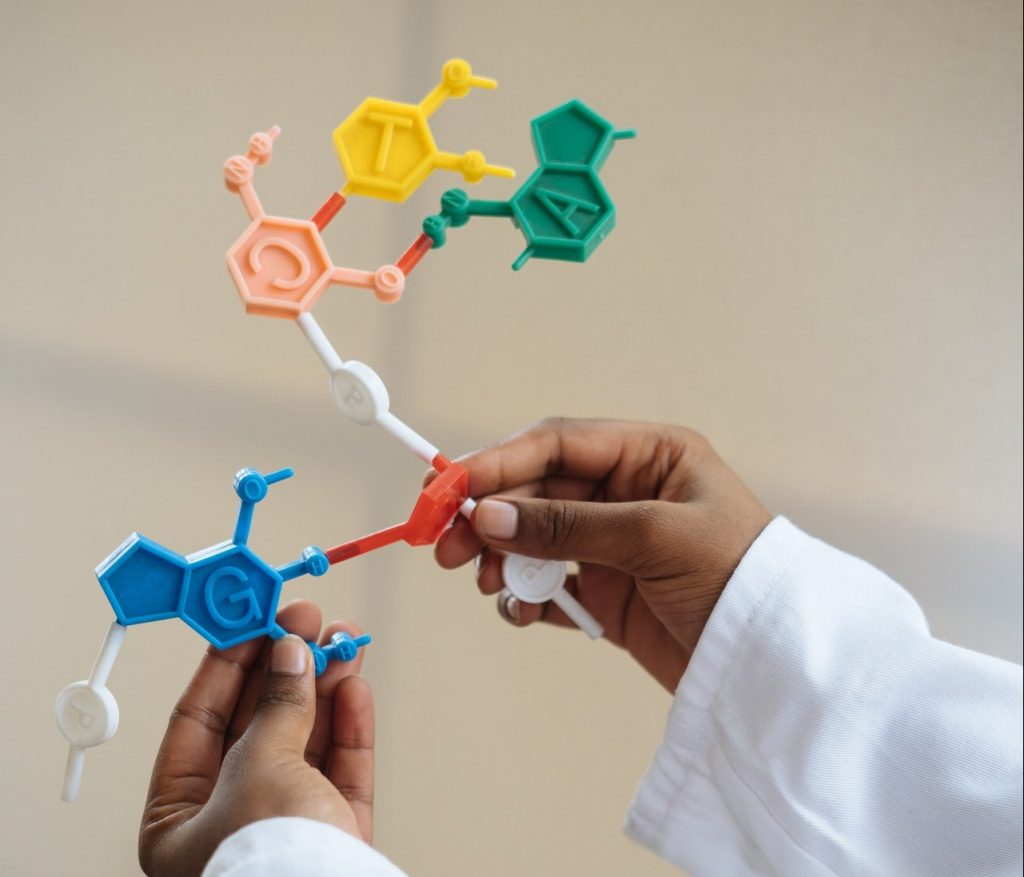
Medicines like Serotonin reuptake inhibitors may help alleviate symptoms, allowing for more serotonin to go through. Structural changes like a smaller amount of gray matter in the hippocampus and amygdala are common factors affecting depression, as well as mood, behavior, learning, and memory.
People with depression are also under chronic stress and have high levels of cytokines, which are immune system regulators but also inflammation markers. Antidepressants have been shown to work in improving this, but can be highly addictive in the long run.
So, what can we do to improve depressive symptoms?
- Since most of these disorders are very complex and not easy to solve, besides antidepressants there are herbal supplements, cognitive behavior therapy or body-mind-spirit integration practices like yoga and meditation.
- Neuroplasticity and neurogenesis are reduced in people with depression, so affecting those through learning, smart supplementing and exercise can be a natural way of dealing with the problem.
- Although there is a lot of philosophy and biotechnology that can be useful to treat this mood disorder, this article is specifically designed to show you the effects of exercise and yoga on mood, depression, neurotransmitters or brain structure changes.
Anxiety: Types, Cause, Intensity, Neuroscience
Anxiety is known as a mood disorder, but before you put a definition on it, you have to realize it’s a normal response to stress. Just as sadness is part of depression, stress is part of anxiety.
To say it is a mood disorder, it is not enough to just feel a bit nervous but to constantly worry over unimportant things, feel emotions of fear and be hyperactive.
Nervousness before the first-time event, whether it’s a job interview, new date, first sex or public speaking is completely normal, in fact, is what is keeping you focused and alert.
Anxiety knows different types, symptoms, and intensities: phobia or trauma, social anxiety, OCD or obsessive-compulsive disorder, and panic attacks.
If depression is associated with the past, anxiety is situated in the future, along with stress and fear for the outcome. Both are normal feelings everyone experiences throughout their lives, the problem is when these mood disorders start affecting your everyday life, sleep, decisions, and behavior.
Anxiety and the Limbic System
Anxiety has a lot to do with your limbic system work, the amygdala, hippocampus, hypothalamus and thalamus. This system works to process emotions and is involved in learning and memory. Usually overly anxious people have larger amygdala, which means better capacity for emotional processing that can translate in higher intensity of fear.
Anxiety therapies include serotonin reuptake inhibitors, cognitive behavioral therapy and other inhibitors. Now the natural way of dealing with it is to look up your own psychology & philosophy and examine your patterns that trigger it. Meditation and Awareness might help.
From standpoint of physiology, we can agree that yoga reduces stress hormones like cortisol and adrenaline, activates parasympathetic, and relaxes & soothes you. This can further improve sleep, which can reduce brain inflammation, improving the overall quality of life and mental health.
Breathwork, another crucial part of yogic training can deactivate specific panic centers in your brain by acting on the gut, which may help people with panic attacks. Overall, learning proper belly breathing helped a lot in terms of oxygenation and stress response, in comparison to shallow chest breathing.
Potential Effects of Yoga on Mood: Stress, Anxiety and Depression
Potential effects of yoga are seen through pathways of hormonal balance, parasympathetic activation, the release of endorphins, stress resilience, self-awareness, and structural brain changes.
Here are a couple of Potential, Evidence-Based Yoga effects on Mood:
- Reduce Depression & Anxiety Symptoms
- Reduce Salivary Cortisol Levels, a Marker of Psychological Stress
- Reduce Serum Levels of Adrenaline and Cortisol
- Deactivation of Specific Panic Receptors
- Increasing Endorphin Secretion
- Reduction in all Stress, Anxiety, and Depression
- Boost Mood, give a Lift-up Feeling
- Improved Quality of Life, Increased Energy
- Boost Thalamic GABA, Promote Relaxation
- Reduces Biochemical markers of Stress and Anxiety
- Improvements in Unipolar Depression
- Increased Regional Grey Matter Density in Frontal, Limbic, Occipital, Temporal and Cerebellar Regions
- Improved Five Negative Factor Emotions
- Improved Neuroplasticity, Learning, and Brain Adaptation
- Smaller Amygdala Volume associated with Yoga
- Improved Working Memory and Executive Function
- Neuroprotection, Prevents Neurodegenerative Diseases
Keep in mind that these effects are tested in different individuals, both healthy or with health conditions or experienced yoga practitioners. These effects will not be specifically applied to every individual, plus there is a wide variety of yoga styles, duration, intensity, and frequency. Plus, most of the measures are self-reported.
Yoga for Depression
Depression prevalence is high in the US. Some of the alternative tools used are herbal supplements, yoga, meditation, and acupuncture. Yoga seems effective for reducing depression, and its practicality and attendance speak for itself. (1)
Most of the yoga practice emphasized asanas or yoga postures, but meditation and breathwork were also included. Previous studies have suggested that yoga components can produce synergistic neurobiological effects on neurotransmitters that ameliorate depressed mood.
- Yoga may improve well-being and quality of life. In a study involving a group of 74 students, 9 weekly sessions of 2.5 hours lead to decreased scores of depression, anxiety, and stress. (2)
The efficiency of yoga in depression treatment was investigated in this review which included 23 interventions. Student numbers and duration were pretty variable, but the average duration was 6 weeks or longer.
- Hatha and Vinyasa yoga styles (23 interventions, 6 weeks or longer) resulted in a reduction of depressive symptoms, especially in patients with lower back pain, pregnant women, addicts, and among those with atrial fibrillation. (3)
- In young adults with mild depression – only 2 classes weekly for 1 hour resulted in reduced symptoms of depression and trait anxiety, for 5 weeks. Secondary changes include reduced fatigue, negative mood, and acute mood improvement. (4)
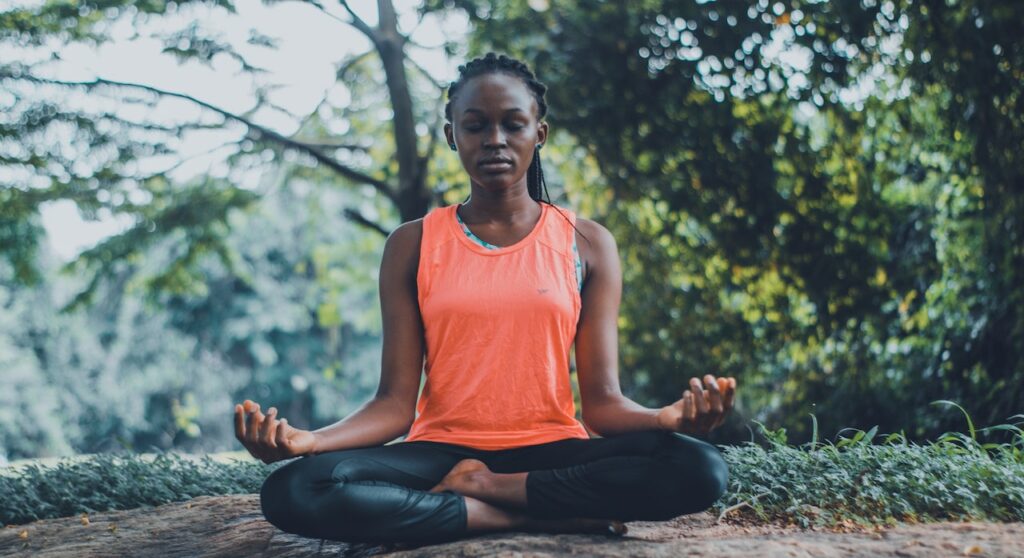
Yoga for Stress
In this section, we will look into how meditation and yoga can ease your stress and make you more relaxed, and what are the pathways behind it.
Stress goes hand in hand with anxiety, but many people don’t really understand what stress truly means. Stress is your body’s reaction to any given change, the need to adapt to new stimuli.
Stress and it’s a crucial part of regeneration, homeostasis, and adaptation. However, there is also psychological stress that comes from mood disorders, which can take a lot of our energy for us to cope with. For example, being chronically stressed at work and having elevated cortisol and adrenaline levels all the time can result in distorted mood, heart arrhythmia, or high blood pressure.
Here are a couple of studies showing the effects of yoga on stress & stress hormones.
- There is evidence that meditation, yoga, and mindfulness can positively influence our mood, and reduce depression and anxiety, as well as negative dimensions of psychological stress. (6)
- It has been shown that there is an association between yoga and cortisol levels, beneficial for reducing stress and chronic periodontitis. (7)
- In 40 participants from 18-25 years, those in the yoga group significantly reduced salivary cortisol levels, which is a biomarker of psychological stress. (8) Yoga also can reduce levels of serum adrenaline and cortisol, which are the major stress hormones. (9)
- For four days – 30 medical students practiced mindful meditation to investigate stress-reduction effects. It turns out that meditation reduced stress, and significantly lowered cortisol levels. (10)
Yoga for Anxiety
Aside from blood tests and hormone scales, besides the reduction of cortisol and adrenaline, anxiety is also reduced in yoga or meditation due to higher self-awareness, parasympathetic activation, and proper breathing.
In fact, some of the breathwork yoga includes can deactivate specific panic receptors and increase endorphin “feel good” chemicals in your blood, plus deeper breathing will improve oxygenation.
- Hatha yoga (52 women, 3 weeks) had a significant effect on the reduction in all stress, depression, and anxiety. (11)
- Yoga may exert positive effects on anxiety disorder for the majority, without adverse effects. (12) and reduce biochemical and physiological markers of stress and anxiety. (13)
- 43 caregivers participated in a randomized study, split into a yoga group and a control one. A significant decrease in anxiety and depression, plus an improved quality of life was a side effect of yoga training. (14)
Yoga and Mood
Exercise by itself, by keeping the body active can be beneficial if done with the right amount and intensity. It gives a stimulus to the human to grow, regenerate and improve.
- Compared to walking yoga was more in boosting thalamic GABA, improving mood, and decreasing anxiety more than walking can. (15)
- Available data still confirms that yoga practice will be way better than not treating or just relaxing, in terms of depression, anxiety, and other mood disorders like OCD or PTSD. It has shown great acute results and it is a safe treatment. (16)
- In psychiatric patients, yoga training improved all five negative emotion factors such as tension anxiety, depression dejection, anger hostility, fatigue inertia, confusion, and bewilderment. Even a single yoga class was effective in reducing stress and improving mood. (17)
- Comparing the effects of yoga on overall mood disorders, the strongest association of yogic improvement was seen in unipolar depression. There were positive effects related to anxiety disorders, bipolar disorder, and PTSD as well. (18)
Research Limitations
Studies have some limitations, important to evaluate the validity of their results. Here’s a highlight of some and NOT ALL studies (and limitation), shown in this article, for context.
- Sampling review emphasizing breathing and meditation instead of yoga styles or specific asanas.
- Higher % of the participants were women, which may be insufficient for generalization.
- The main mechanism behind yoga’s effects on mood are unclear.
- Small sample sizes for generalization, some studies had also short duration.
- In need for future studies with higher complexity design to truly evaluate.
- The mood improvement in many studies was subjectively measured.
- Insufficient evidence of objective effect of meditation on mood and attention.
- Need of more research with randomization, adequate controls and well-defined populations.
Yoga on Brain Structure
Brain structure, development, and genetics play a major role in how prone a person is to developing mood disorders, or how serious their anxiety or depression might get.
Researchers have found an association between mood disorders or emotional imbalance and the medial prefrontal cortex, limbic system, amygdala, and hippocampus structure, and function. MPFC and the limbic system can further affect autonomic regulation and hormonal response. (19)
Brain Scans have shown that depressed people or those with major mood disorders have less grey matter in the brain. The mindfulness-based practice was shown to increase regional grey matter density. (20)
Extra Research: Yoga on Brain Structure
- When it comes to brain health, yoga was shown to positively affect ones brain with effect on functional connectivity of dorsolateral and prefrontal cortex activity and prefrontal cortex and hippocampus structure. This can be beneficial for preventing neurodegenerative diseases too. (21) Hatha yoga techniques were also found to exhibit greater grey matter volume in frontal, limbic, occipital, temporal and cerebellar regions. Plus, hatha yoga was associated with higher neuroplasticity, ability of our brains to adapt.
- When it comes to specifically affecting brain structure through yoga, there is a study offering a view into experienced yogi brain. It turns out that yoga improved grey matter volume in left hippocampus. Yoga also affects brain regions involved in working memory and executive functions. (22) The amygdala, the emotional processor has higher volume in anxious individuals. Yoga & meditation are actually associated with smaller amygdala volume, shows the Rotterdam study.(23)
Conclusion
Yoga & Meditation can positively affect our mood from a different perspective. Some of these include brain structure change, self-awareness, thought pattern reversal, reduction of serum cortisol and adrenaline, stress resilience, and endorphin secretion. Types, frequency, and intensity are pretty important too, but overall yoga reduced symptoms of depression, anxiety, and other mood disorders, without serious adverse effects, for the majority.

